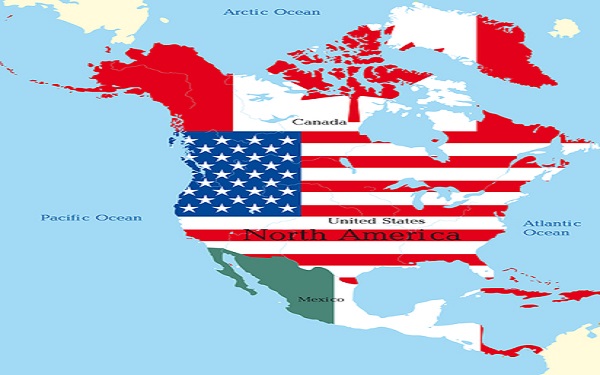After more than a year of intense negotiations, the United States, Canada and Mexico reached an agreement to update the North American Free Trade Agreement, the 1994 pact that governs more than $1.2 trillion worth of trade among the three nations.
The new deal will be known as the United States-Mexico-Canada Agreement, or USMCA. It won’t go into effect right away. Most of the key provisions don’t start until 2020 because leaders from the three countries have to sign it and then Congress and the legislatures in Canada and Mexico have to approve it, a process that is expected to take months.
Leaders of the American Trucking Associations praised the governments for coming together on a framework for continued free trade between the three North American nations.
“ATA is pleased that the United States, Canada and Mexico will continue their nearly 25-year-long tradition of free and open trade among North American neighbors,” said ATA President and CEO Chris Spear. “The wide-ranging pact is a positive step for the nearly 50,000 Americans working in jobs directly connected to cross-border trucking – as well as the more than seven million Americans working in trucking-related jobs.”
Here’s a rundown of what’s in the “new NAFTA.”
The goal of the new deal is to have more cars and truck parts made in North America. Starting in 2020, to qualify for zero tariffs, a car or truck must have 75 percent of its components manufactured in Canada, Mexico or the United States, a substantial boost from the current 62.5 percent requirement.
Starting in 2020, cars and trucks should have at least 30 percent of the work on the vehicle done by workers earning $16 an hour, or about three times what the typical Mexican autoworker currently makes. That gradually moves up to 40 percent for cars by 2023.
While many economists think these new rules will help some North American workers, they also warn that car prices might rise and some small cars may no longer be made in North America because they would be too expensive under the new requirements.
The new agreement will come with improved labor and environmental rights, making a number of significant upgrades to environmental and labor regulations, especially regarding Mexico. For example, the USMCA stipulates that Mexican trucks that cross the border into the United States must meet higher safety regulations and that Mexican workers must have more ability to organize and form unions. Some of these provisions might be difficult to enforce, but the Trump administration says it is committed to ensuring these happen — a reason U.S. labor unions and some Democrats are cheering the new rules.
Mexico and Canada also get assurance Trump won’t pound them with auto tariffs. Trump has repeatedly threatened to slap hefty tariffs on car and vehicle parts coming from overseas into the United States. Along with the new trade deal, his administration signed “side letters” allowing the two nations to mostly dodge Trump’s auto tariffs.
The side letters say Canada and Mexico can continue sending about the same vehicles and parts across the border free of charge, regardless of whether auto tariffs go into effect down the road. Only parts above that quota could face tariffs.
Canada will somewhat open up its milk market to U.S. farmers. Trump tweeted often about how unfair he thought it was that Canada charged such high tariffs on U.S. dairy products. To ensure Canadian dairy farmers don’t go bankrupt, the Canadian government restricts how much dairy can be produced in the country and how much foreign dairy can enter to keep milk prices high. Trump didn’t like that, and dairy was a major sticking point in the negotiations. In the end, Canada is keeping most of its complex system in place, but it is giving greater market share to U.S. dairy farmers.
The USMCA stipulates that the three nations will review the agreement after six years. If all parties agree it’s still good, then the deal will continue for the full 16 year period (with the ability to renew after that for another 16 years). This was a compromise provision: Trump wanted ability to renegotiate the deal frequently.
Source: The Washington Post


